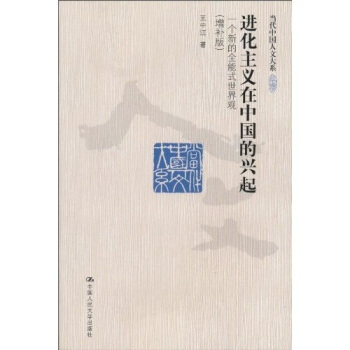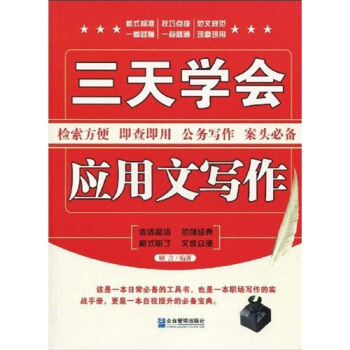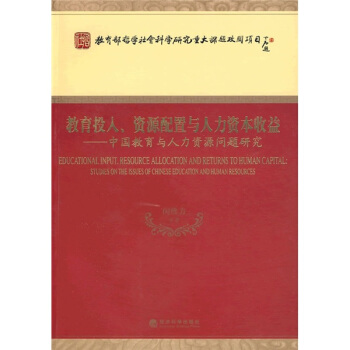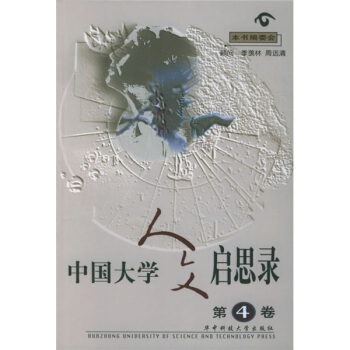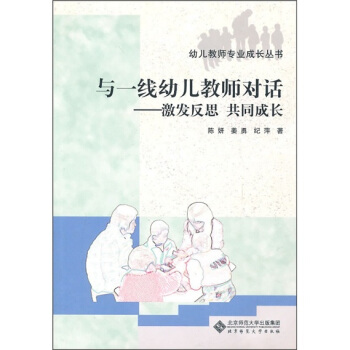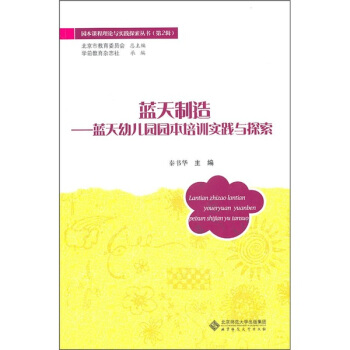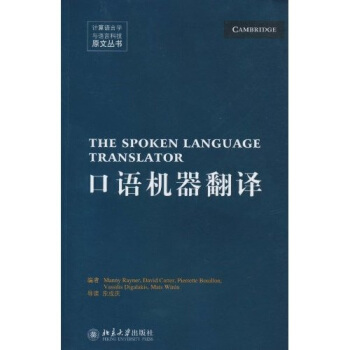

具体描述
内容简介
计算语言学研究滥觞于上世纪五六十年代的机器翻译研究。中文的相关研究也几乎同步开始,1960年起在柏克莱加州大学研究室,王士元、邹嘉彦、C.Y.Dougherty等人已开始研究中英、中俄机器翻译。他们的中文计算语言学研究,可说是与世界最尖端科技同步的。内页插图
目录
导读Preface
Acknowledgements
Introduction
1.1 What This Book Is About
1.1.1 Why Do Spoken Language Translation?
1.1.2 What Are the Basic Problems?
1.1.3 What Is It Realistic to Attempt Today?
1.1.4 What Have We Achieved?
1.2 Overall System Architecture
1.3 An Illustrative Example
1.4 In Defence of Hand-Coded Grammars
1.5 Hybrid Transfer
1.5.1 The Need for Grammatical Knowledge
1.5.2 The Need for Preferences
1.6 Speech Processing
1.7 Corpora
Part 1 Language Processing and Corpora
Translation Using the Core Language Engine
2.1 Introduction: Multi-Engine Translation
2.2 Word-to-Word Translation
2.3 Quasi Logical Form
2.3.1 Introduction
2.3.2 Structure of QLF
2.3.3 QLF as a Transfer Formalism: Examples
2.3.4 Head-Head Relations in QLF
2.4 Unification Grammar and QLFs
2.4.1 The CLE Unification Grammar Formalism
2.4.2 Unification Grammar Example: French Noun Phrases
2.4.3 Example 2a: Clauses in Swedish
2.4.4 Example 2b: Relative Clauses in Swedish
2.5 Orthographic Analysis and the Lexicon
2.6 Transfer Rules
2.6.1 Pre- and Posttransfer
2.7 The QLF-Based Processing Path
2.7.1 Linguistic Analysis
2.7.2 Transfer and Transfer Preferences
2.7.3 Generation
2.8 Summary
Grammar Specialisation
3.1 Introduction
3.2 Explanation-Based Learning for Grammar
Specialisation
3.2.1 A Definition of Explanation-Based Learning
3.2.2 Explanation-Based Learning on Unification Grammars
3.2.3 Category Specialisation
3.2.4 Elaborate Cutting-Up Criteria
3.3 An LR Parsing Method for Specialised Grammars
3.3.1 Basic LR Parsing
3.3.2 Prefix Merging
3.3.3 Abstraction
3.4 Empirical Results
3.4.1 Experimental Setup
3.4.2 Discussion of Results
3.5 Conclusions
Choosing among Interpretations
4.1 Properties and Discriminants
4.2 Constituent Pruning
4.2.1 Discriminants for Pruning
4.2.2 Deciding Which Edges to Prune
4.2.3 Probability Estimates for Discriminants
4.2.4 Relation to Other Pruning Methods
4.3 Choosing among QLF Analyses
4.3.1 Analysis Choice: An Example
4.3.2 Further Advantages of a Discriminant Scheme .
4.3.3 Numerical Metrics
4.4 Choosing among Transferred QLFs
4.5 Choosing Paths in the Chart
The TreeBanker
5.1 Motivation
5.2 Representational Issues
5.3 Overview of the TreeBanker
5.4 The Supervised Training Process
5.4.1 Properties and Discriminants in Training
5.4.2 Additional Functionality
5.5 Training for Transfer Choice
5.6 Evaluation and Conclusions
Acquisition of Lexical Entries
6. 1 The Lexical Acquisition Tool, LexMake
6.2 Acquiring Word-to-Word Transfer Rules
6.3 Evaluation and Conclusions
Spelling and Morphology
7.1 Introduction
7.2 The Description Language
7.2.1 Morphophonology
7.2.2 Word Formation and Interfacing to Syntax
7.3 Compilation
7.3.1 Compiling Spelling Patterns
7.3.2 Representing Lexical Roots
7.3.3 Applying Obligatory Rules
7.3.4 Interword Rules
7.3.5 Timings
7.4 Some Examples
7.4.1 Multiple-Letter Spelling Changes
7.4.2 Using Features to Control Rule Application
7.4.3 Interword Spelling Changes
7.5 Debugging the Rules
……
Part 2 Linguistic Coverage
Part 3 Speech Processing
精彩书摘
棒性和系统的自适应能力。同书面语相比,口语的声学特性有一定的特殊性,这类语音的基频、时长、幅度等特征都随表达内容、感情色彩等不同,变化的范围比朗读语音大得多,同时还有非语声信号和噪声,充分研究这些特性,建立精细的声学模型非常重要。而且,讲话人往往是在较强的背景噪声或多讲话人环境下发音的,如果是电话自动语音翻译系统,还存在通讯干扰等其他因素的影响,因此,提高语音识别在不同说话人、不同声学环境及通道条件下的鲁棒性,在口语翻译系统中尤其重要。另外,在语言学层面,口语句子中含有大量的修正、重复、口头语、省略等非规范语言现象,研究这些特征,对语言模型进行完善,包括建模、算法和训练等各个方面,将有助于提高语音识别的正确率。(2)翻译方法有待于进一步研究。尽管统计翻译方法具有较高的鲁棒性,但是,对非规范语言现象和噪声的处理能力仍然十分有限,而且这种方法与训练语料的规模和质量密切相关。统计方法与规则方法的结合一直是人们所追求的,但是具体如何融合,多翻译引擎以什么样的集成方式可以获得最好的系统性能,统计模型赖以训练的语料规模达到多大才算充分,非语言信息(手势、表情、说话人角色等)如何融人翻译模型等,诸多问题都远远没有得到解决。
……
前言/序言
计算语言学(Computational Lingljistics,CL)在语言科学与信息科学的研究领域扮演关键性的角色。语言学理论寻求对语言现象规律性的揭示与完整的解释。计算语言学正好提供了验证与应用这些规律与解释的大好机会。作为语言学、信息科学乃至于心理学与认知科学结合的交叉学科,计算语言学更提供了语言学基础研究与应用研究的绝佳界面。事实上,计算语言学与人类语言科技(Human Langllage Technology,HLT)可以视为一体两面,不可分割。计算语言学研究滥觞于上世纪五六十年代的机器翻译研究。中文的相关研究也几乎同步开始,1960年起在柏克莱加州大学研究室,王士元、邹嘉彦、C.Y.Dougherty等人已开始研究中英、中俄机器翻译。他们的中文计算语言学研究,可说是与世界最尖端科技同步的。中国国内中俄翻译研究也不遑多让,大约在上世纪50年代中期便已开始。可惜的是,这些中文相关早期机器翻译研究,由于硬件与软件的限制,没能延续下来。中文计算语言学研究比较有系统的进展,还要等到1986年;海峡两岸在同一年成立了两个致力于中文计算语言学基础架构建立的研究群。北京大学的计算语言学研究所在朱德熙先生倡导下成立,随后一段时间由陆俭明、俞士汶主持。而台湾“中研院”的中文词知识库小组,由谢清俊创立,陈克健主持,黄居仁1987年返台后加入。
用户评价
说实话,当我翻开《口语机器翻译》时,我原本期望看到的是一堆堆炫酷的算法图表和最新的Transformer变体的对比分析。我错了,这本书的价值,恰恰在于它“反技术堆砌”,而更侧重于“应用哲学”的构建。我个人最大的感触来自它对“口语输入噪声处理”那一部分的论述。我们都知道,现实中的口语环境是嘈杂的:背景噪音、说话者口吃、语速的忽快忽慢,这些都是书本上的理想化模型里缺失的“真实”。作者没有满足于使用标准的降噪算法,他们提出了一种基于“情感语义预测”的滤波器,我粗略地理解为,机器要先“听懂”说话者的情绪倾向,才能更好地过滤掉那些与核心语义无关的干扰信息。这简直是革命性的思路!这种思路将机器翻译从单纯的语言学任务,提升到了情境感知任务。而且,书中穿插的那些实际案例分析,选取的角度非常刁钻,不是那种教科书式的完美对话,而是深夜酒吧里的即兴演讲、法庭上激烈的质询,甚至是病房里医生与家属之间充满压力的沟通。通过这些案例,我真切地感受到了作者对“机器辅助人类沟通”这一终极目标的虔诚与思考。这本书的叙事节奏非常流畅,它不会让你觉得自己在啃一本冷冰冰的技术手册,而更像是在听一位经验丰富的大师,娓娓道来他如何驯服这头技术猛兽。
评分这份评价或许会显得有些跳跃,因为这本书给我的触动,实在难以用线性的逻辑来组织。我主要关注的是人机交互界面(HCI)在口语翻译中的应用,而这本书的第八章《情感反馈与动态调整机制》,彻底颠覆了我对“实时翻译设备”的认知。它描述的不是那种“你说话,它翻译”的简单闭环,而是一个包含多模态输入的复杂系统。作者提出,理想的口语翻译机器应该能实时捕捉说话者的面部微表情、手势,并将其作为校准翻译输出的辅助信号。例如,当翻译输出与说话者面部表情显示出的“惊讶”程度不匹配时,系统应立即进行二次修正。这已经超越了纯粹的“翻译”,而是进入了“情境理解与情感同步”的范畴。书中对“主观延迟容忍度”的探讨也极其精妙,它指出不同文化和不同任务(比如商务谈判与朋友闲聊)对翻译延迟的容忍度是天壤之别,机器必须像一个经验丰富的专业口译员那样,根据场域的变化,动态调整自己的响应速度。这本书的宏大视野让我感到震撼,它把口语机器翻译放在了人工智能、心理学乃至社会学的交叉点上进行审视,其学术深度和前瞻性,足以引领未来十年的研究方向。
评分我是一名母语非英语的播客制作人,长期致力于将小语种的深度访谈内容推向国际。我购买过很多关于机器翻译的书籍,但大部分都停留在“如何训练一个基础模型”的层面。然而,《口语机器翻译》却极其罕见地深入探讨了“语域(Register)”和“非正式语言的结构重塑”这一核心难题。你知道,在口语交流中,人们大量使用习语、俚语,甚至是自创的词汇组合。传统MT系统面对这些时往往会崩溃,直接输出一串无意义的字符。这本书的第三篇,用非常细腻的笔触描绘了机器如何通过“意图建模”而非“词汇匹配”来重构这些非标准输入。我印象最深的是关于“口头语的结构简化”一节,作者详细解释了机器如何识别出冗余的填充词(如“那个”、“你知道的”)并优雅地将其剔除,同时不损失原话的语气和重点。这比单纯的删除要高明得多,它体现了一种对人类交流“效率”和“风格”的双重尊重。这本书的排版和插图也值得称赞,大量的流程图和对比矩阵,让原本晦涩难懂的概念变得可视化、易于消化。对于像我这样,需要将机器翻译结果融入到高度风格化的内容创作中的人来说,这本书提供的工具和理念,简直是雪中送炭。它教会我的不是如何写代码,而是如何让机器“像人一样说话”。
评分我是一名资深的技术文档编辑,平时的工作就是将各种晦涩难懂的技术规范转化为普通人能理解的语言。因此,我对任何声称能处理“口语”的翻译工具都抱持着怀疑态度,因为口语的歧义性和即时性,恰恰是文档化最怕遇到的“敌人”。《口语机器翻译》在这方面的论述,简直像是一部为我们这些“语言结构化”工作者量身定制的指南。我特别欣赏它在“模糊信息处理与澄清策略”部分所提出的观点。作者认为,机器翻译不应该一味追求“给出答案”,而在某些高风险的口语场景中,更优策略是“请求澄清”或者“提供多重备选”。书中详细分析了何时机器应该主动打断,何时应该保持沉默等待上下文,这涉及到的决策树逻辑之复杂,令人叹服。它教会我们,完美的翻译可能并不存在,但最负责任的翻译一定是知道自己“不知道”的翻译。这本书的语言风格极其严谨,但又不失启发性,它像一位经验老道的导师,不直接给你鱼,而是教你如何辨别哪些“鱼”是有毒的。对于任何希望将口语机器翻译技术落地到严肃、高风险领域的人士来说,这本书提供的安全边界和伦理框架,其价值甚至超过了其技术细节本身。
评分这本《口语机器翻译》的横空出世,着实让我这个长期混迹于技术前沿的翻译工作者捏了一把汗,也捏了一把期待。我得承认,我一开始带着一种近乎苛刻的审视态度来翻阅它的。毕竟,口语翻译这个领域,它不像书面翻译那样有章可循,它充满了瞬息万变的语境、潜台词、文化差异,以及最致命的——人的情感波动。这本书的作者似乎深谙此道,他们没有沉湎于对现有神经网络架构的肤浅罗列,而是将笔触深入到了“实时性”与“自然度”这对孪生难题之中。特别是关于“延迟补偿模型”的章节,我感觉作者在描述一个极其复杂的数学模型时,用词却异常的灵动,仿佛在描绘一场高速公路上两辆赛车的竞速,如何精确地在毫秒之间完成信息的交接而不至于发生碰撞。书中对跨文化交际语境对机器翻译准确度的影响分析,更是鞭辟入里,它不再是简单地罗列“失礼”的翻译案例,而是从认知心理学的角度去剖析,为什么某些文化背景下的“停顿”或“语气词”在被机器处理时会造成灾难性的后果。读完这部分,我甚至开始重新审视我过去处理国际会议同传时,那些依赖于直觉的瞬间判断,作者提供了一套可以被系统化训练的思维框架,这对于培养下一代高水平的口语翻译人才而言,无疑是提供了宝贵的理论基石。这本书的深度,绝非市面上那些浅尝辄止的“技术入门指南”所能比拟。
评分精彩书摘
评分棒性和系统的自适应能力。同书面语相比,口语的声学特性有一定的特殊性,这类语音的基频、时长、幅度等特征都随表达内容、感情色彩等不同,变化的范围比朗读语音大得多,同时还有非语声信号和噪声,充分研究这些特性,建立精细的声学模型非常重要。而且,讲话人往往是在较强的背景噪声或多讲话人环境下发音的,如果是电话自动语音翻译系统,还存在通讯干扰等其他因素的影响,因此,提高语音识别在不同说话人、不同声学环境及通道条件下的鲁棒性,在口语翻译系统中尤其重要。另外,在语言学层面,口语句子中含有大量的修正、重复、口头语、省略等非规范语言现象,研究这些特征,对语言模型进行完善,包括建模、算法和训练等各个方面,将有助于提高语音识别的正确率。
评分(2)翻译方法有待于进一步研究。尽管统计翻译方法具有较高的鲁棒性,但是,对非规范语言现象和噪声的处理能力仍然十分有限,而且这种方法与训练语料的规模和质量密切相关。统计方法与规则方法的结合一直是人们所追求的,但是具体如何融合,多翻译引擎以什么样的集成方式可以获得最好的系统性能,统计模型赖以训练的语料规模达到多大才算充分,非语言信息(手势、表情、说话人角色等)如何融人翻译模型等,诸多问题都远远没有得到解决。
评分计算语言学(Computational Lingljistics,CL)在语言科学与信息科学的研究领域扮演关键性的角色。语言学理论寻求对语言现象规律性的揭示与完整的解释。计算语言学正好提供了验证与应用这些规律与解释的大好机会。作为语言学、信息科学乃至于心理学与认知科学结合的交叉学科,计算语言学更提供了语言学基础研究与应用研究的绝佳界面。事实上,计算语言学与人类语言科技(Human Langllage Technology,HLT)可以视为一体两面,不可分割。
评分计算语言学研究滥觞于上世纪五六十年代的机器翻译研究。中文的相关研究也几乎同步开始,1960年起在柏克莱加州大学研究室,王士元、邹嘉彦、C.Y.Dougherty等人已开始研究中英、中俄机器翻译。他们的中文计算语言学研究,可说是与世界最尖端科技同步的。中国国内中俄翻译研究也不遑多让,大约在上世纪50年代中期便已开始。可惜的是,这些中文相关早期机器翻译研究,由于硬件与软件的限制,没能延续下来。中文计算语言学研究比较有系统的进展,还要等到1986年;海峡两岸在同一年成立了两个致力于中文计算语言学基础架构建立的研究群。北京大学的计算语言学研究所在朱德熙先生倡导下成立,随后一段时间由陆俭明、俞士汶主持。而台湾“中研院”的中文词知识库小组,由谢清俊创立,陈克健主持,黄居仁1987年返台后加入。
评分棒性和系统的自适应能力。同书面语相比,口语的声学特性有一定的特殊性,这类语音的基频、时长、幅度等特征都随表达内容、感情色彩等不同,变化的范围比朗读语音大得多,同时还有非语声信号和噪声,充分研究这些特性,建立精细的声学模型非常重要。而且,讲话人往往是在较强的背景噪声或多讲话人环境下发音的,如果是电话自动语音翻译系统,还存在通讯干扰等其他因素的影响,因此,提高语音识别在不同说话人、不同声学环境及通道条件下的鲁棒性,在口语翻译系统中尤其重要。另外,在语言学层面,口语句子中含有大量的修正、重复、口头语、省略等非规范语言现象,研究这些特征,对语言模型进行完善,包括建模、算法和训练等各个方面,将有助于提高语音识别的正确率。
评分精彩书摘
评分(2)翻译方法有待于进一步研究。尽管统计翻译方法具有较高的鲁棒性,但是,对非规范语言现象和噪声的处理能力仍然十分有限,而且这种方法与训练语料的规模和质量密切相关。统计方法与规则方法的结合一直是人们所追求的,但是具体如何融合,多翻译引擎以什么样的集成方式可以获得最好的系统性能,统计模型赖以训练的语料规模达到多大才算充分,非语言信息(手势、表情、说话人角色等)如何融人翻译模型等,诸多问题都远远没有得到解决。
评分计算语言学研究滥觞于上世纪五六十年代的机器翻译研究。中文的相关研究也几乎同步开始,1960年起在柏克莱加州大学研究室,王士元、邹嘉彦、C.Y.Dougherty等人已开始研究中英、中俄机器翻译。他们的中文计算语言学研究,可说是与世界最尖端科技同步的。中国国内中俄翻译研究也不遑多让,大约在上世纪50年代中期便已开始。可惜的是,这些中文相关早期机器翻译研究,由于硬件与软件的限制,没能延续下来。中文计算语言学研究比较有系统的进展,还要等到1986年;海峡两岸在同一年成立了两个致力于中文计算语言学基础架构建立的研究群。北京大学的计算语言学研究所在朱德熙先生倡导下成立,随后一段时间由陆俭明、俞士汶主持。而台湾“中研院”的中文词知识库小组,由谢清俊创立,陈克健主持,黄居仁1987年返台后加入。
相关图书
本站所有内容均为互联网搜索引擎提供的公开搜索信息,本站不存储任何数据与内容,任何内容与数据均与本站无关,如有需要请联系相关搜索引擎包括但不限于百度,google,bing,sogou 等
© 2025 book.tinynews.org All Rights Reserved. 静思书屋 版权所有

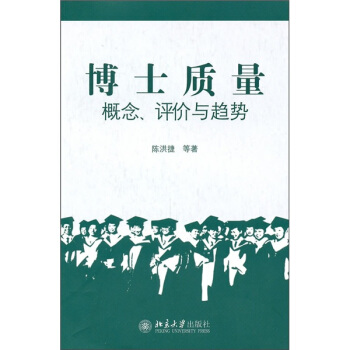

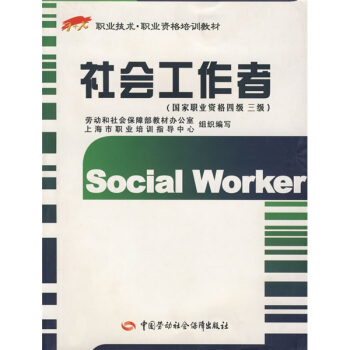
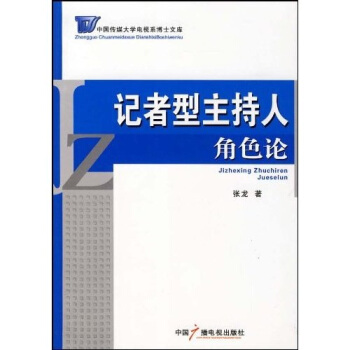
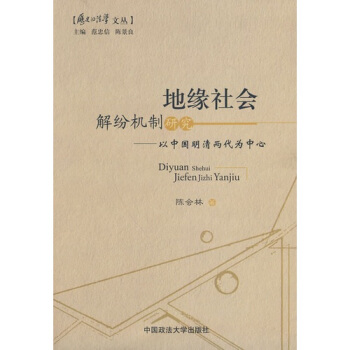
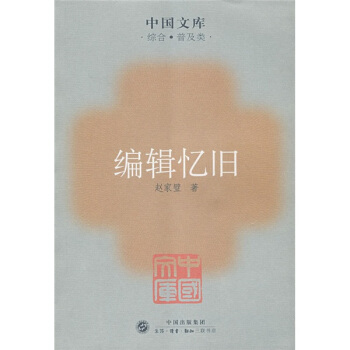
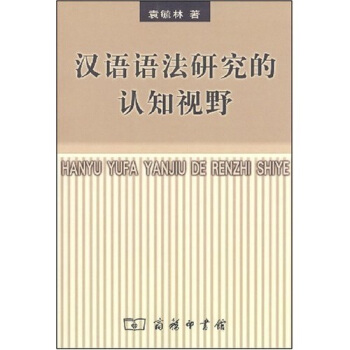
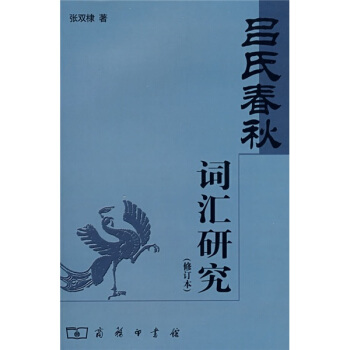
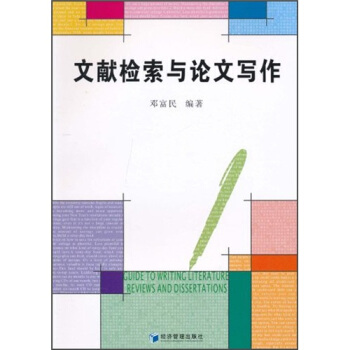
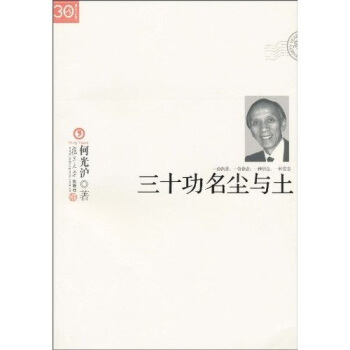
![小组工作导论:学生手册(第5版) [Student Workbook for Toseland and Rives An Introduction to Group Work Practice(Fifth Edition)] pdf epub mobi 电子书 下载](https://pic.tinynews.org/10317124/acb3051a-baac-45be-99a3-f999dbf6f4ae.jpg)
